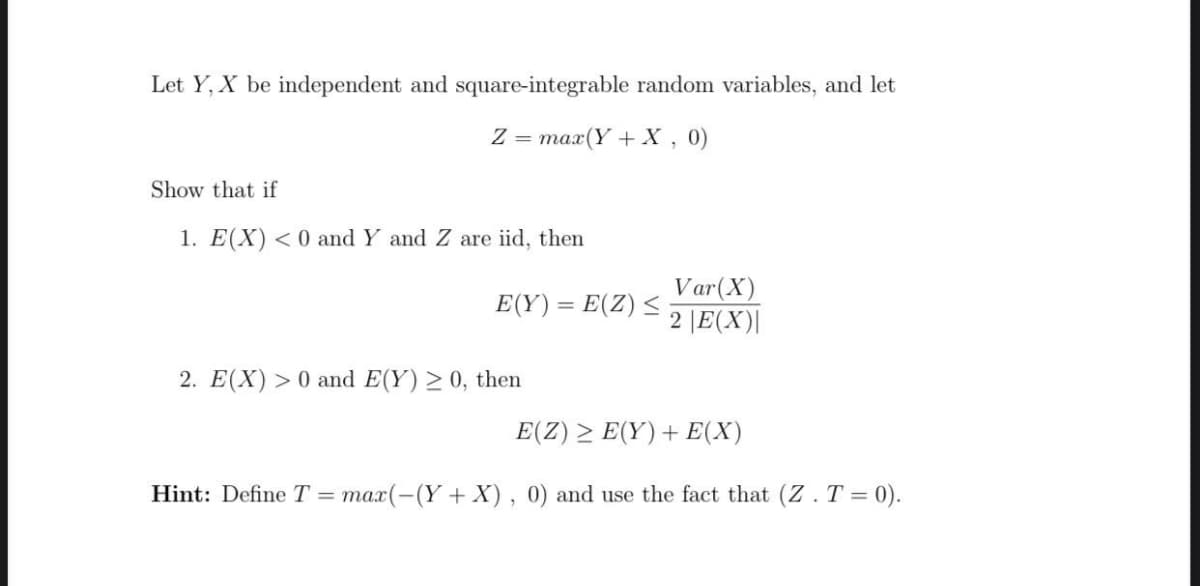Let Y, X be independent and square-integrable random variables, and let Z = max(Y + X, 0) Show that if 1. E(X) < 0 and Y and Z are iid, then Var(X) 2 |E(X)| E(Y) = E(Z) < 2. E(X) > 0 and E(Y) > 0, then E(Z) > E(Y)+ E(X)
Let Y, X be independent and square-integrable random variables, and let Z = max(Y + X, 0) Show that if 1. E(X) < 0 and Y and Z are iid, then Var(X) 2 |E(X)| E(Y) = E(Z) < 2. E(X) > 0 and E(Y) > 0, then E(Z) > E(Y)+ E(X)
Linear Algebra: A Modern Introduction
4th Edition
ISBN:9781285463247
Author:David Poole
Publisher:David Poole
Chapter3: Matrices
Section3.7: Applications
Problem 13EQ
Related questions
Question

Transcribed Image Text:Let Y, X be independent and square-integrable random variables, and let
Z = max(Y +X , 0)
Show that if
1. E(X) <0 and Y and Z are iid, then
Var(X)
2 |E(X)|
E(Y) = E(Z) <
2. E(X) > 0 and E(Y) > 0, then
E(Ζ) E(Y) + Ε(X)
Hint: Define T = max(-(Y+ X), 0) and use the fact that (Z .T = 0).
Expert Solution
This question has been solved!
Explore an expertly crafted, step-by-step solution for a thorough understanding of key concepts.
Step by step
Solved in 3 steps

Recommended textbooks for you

Linear Algebra: A Modern Introduction
Algebra
ISBN:
9781285463247
Author:
David Poole
Publisher:
Cengage Learning

Algebra & Trigonometry with Analytic Geometry
Algebra
ISBN:
9781133382119
Author:
Swokowski
Publisher:
Cengage

Linear Algebra: A Modern Introduction
Algebra
ISBN:
9781285463247
Author:
David Poole
Publisher:
Cengage Learning

Algebra & Trigonometry with Analytic Geometry
Algebra
ISBN:
9781133382119
Author:
Swokowski
Publisher:
Cengage